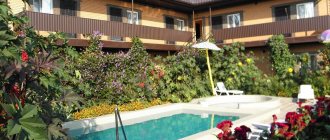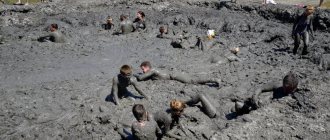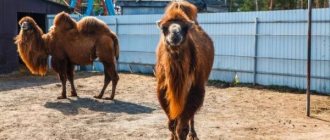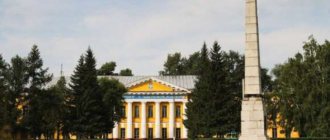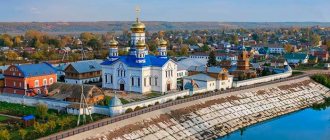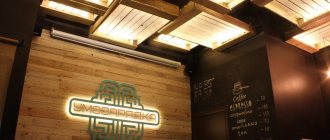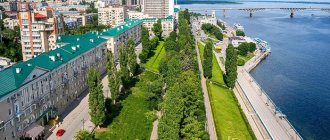Brest – the heroic city of Belarus
The Brest region extends across the southwest of our country. It neighbors Poland and Ukraine. This explains the peculiarities of the local dialect. The region consists of 16 districts and 3 cities of regional subordination: Brest, Baranovichi, Pinsk. The population of the capital of the Brest region is slightly more than 340 thousand inhabitants. Considering the geographical location of the city on the border with the Republic of Poland, Brest is a large transport terminal. There are three customs checkpoints near it, major transport routes pass through the city, such as E30 (Berlin-Warsaw-Brest-Minsk-Moscow), and there is also a river port on the river in the settlement itself. Mukhavets.
Pages of the history of the city of Brest
The territory of the Brest region has long been inhabited by Slavic and Baltic tribes. It alternately joined the states of that time: the Grand Duchy of Lithuania, the Polish-Lithuanian Commonwealth, the Russian Empire, and the Polish Republic. The current outlines of the Brest region were assigned to it only in 1954.
The Brest region represents a colorful and outstanding layer of cultural heritage of Belarusians. You can see this with your own eyes, because there are about 30 museums here. Each of the museums is interesting in its own way. For example, the museum “Saved Art Treasures”
is the only museum in Belarus where works of art and rare items that were seized by customs officers in Brest are exhibited.
Along with museums, the following monuments of historical and cultural heritage are of great interest: Brest Fortress, Belovezhskaya Pushcha, Kamenets Tower, Puslovsky Palace, Ruzhany Palace, Suvorov Museum.
Transport
Brest's public transport network includes about 10 trolleybus and 50 bus routes, as well as many minibuses going in various directions. The best way to navigate the city is with a map or guidebook. The cost of travel on buses and trolleybuses is 0.55 BYN; tickets are sold at Brestgortrans kiosks at bus stops or in newspaper stands. You can also buy a ticket from the driver, but it will cost a little more: 0.6 BYN. The fare on commercial route No. 50, connecting the Tsvetotron and Adamkovskaya stops, is 0.50 BYN. A ten-day pass for one type of transport costs 6.30 BYN, for both - 8.50 BYN. You can ride a minibus for 0.6 BYN. Since 2021, it has become possible to pay for a trip using a smartphone - you need to buy a ticket in the application and redeem it when boarding the transport.
Another convenient way to get around the city is a taxi: you can catch one on the street, but it’s easier to call one by phone or via the Internet. For landing you will need to pay from 2 BYN, for each km - 0.4-0.6 BYN.
If you want to change your four-wheeled vehicle to a two-wheeled one, rent a bicycle. Rental points are located throughout the city, half an hour of skiing will cost from 2 BYN, 2 hours - from 7 BYN, 4 hours - from 12 BYN. The city has paths and bicycle parking.
Brest is the capital of the Brest region
Brest city
is the center of the Brest region and Brest district.
Brest was first mentioned in the chronicle “The Tale of Bygone Years” in 1019. The ancient name of the city is Berestye. If you follow the most important option, the name comes from the word “berest” (the name of a tree) or from “birch bark” (birch bark). But along with this version of the origin of the name, there is also a second option. According to legend, it talks about a ford (crossing) through a swamp.
Sights of Brest
To learn specifically and in detail about the emergence of Brest, you should definitely visit the Berestye archaeological museum
. The basis of the museum is the found parts of the ancient Brest settlement, the construction of a craft settlement of the 13th century. On the site of the ancient city, at a depth of 4 m, archaeologists found streets that were paved with wood, the remains of buildings for various purposes. All this is located on a vast area.
The city of Brest is known throughout the world for its enormous services during the Great Patriotic War
. It is the second city in Belarus that is rightfully awarded the title Hero City for its desperate battles. The construction of the Brest Fortress began in 1830. In those days, it was called the Brest-Litovsk Fortress and was intended to strengthen the borders of the Russian Empire. But the Brest Fortress itself was the first to feel the attack of the Nazi occupiers during the Great Patriotic War. Desperate, uncompromising battles took place on the huge area of the fortress, until the last soldier. By visiting the Brest Fortress memorial, guests of our country plunge into the tragedy and inviolability of those days.
The following monuments of historical and cultural heritage are of great interest:
- pedestrian street Sovetskaya,
- St. Nicholas Brethren Church,
- the Millennium Monument of Brest and many others.
In addition, during a tour of the Brest region you will see that the region itself is rich in famous attractions:
- Belovezhskaya Pushcha,
- Kamenets Tower,
- Puslovsky Palace,
- Ruzhany Palace,
- Suvorov Museum.
Temples
- Alexander Nevsky at the serf hospital (inactive, lost)
- Alexander Peresvet and Andrey Oslyabi, temple-chapel at the border outpost (under construction)
- Athanasius of Brest, temple of the Afanasyevsky Monastery
- Annunciation of the Mother of God, temple of the Simeonovsky Monastery (inactive, dismantled in 1834)
- Resurrection of Christ, cathedral church-monument of the Great Victory
- Joy to all who mourn, icons of the Mother of God
- All-Tsarina, icons of the Mother of God
- St. George the Victorious
- Demetrius Donskoy, temple-chapel
- John the Russian
- The Life-Giving Cross, Church of the Mother of God of the Nativity Monastery (inactive, lost)
- Nicholas the Wonderworker
- garrison cathedral
- fraternal temple
Temples included in the city deanery
- John the Theologian in the village. Cherny
- Ksenia of Petersburg in the village of Telmy-1
- Peter and Paul in the village. Kosichi
- Intercession of the Blessed Virgin Mary in the village. Kamenitsa-Zhirovetskaya
- Nativity of the Virgin Mary in the village. Shchebrin
Brest today
Brest
– a significant industrial center, since the development of industrial enterprises in the region is facilitated by its favorable geographical border location. Among the largest are Brestselmash, a hosiery factory, and carpet production. Brest liquor and vodka products are famous for their quality.
Recently, visas were canceled for residents of 80 countries wishing to visit Brest. It has become even easier to visit Belarus, plunge into the charm of the hero city, and see the beautiful Belarusian nature.
You will remember your walk around Brest for a long time!
Weather
The climate in Brest is temperate continental, reminiscent of Moscow.
It rains frequently throughout the year. Summer is warm, the average daytime temperature is about +19 °C. July is considered the warmest and rainiest month. June and August are a little cooler and less rainy. Winters are mild, with frequent thaws. The average winter day temperature is −3°C. Snow usually falls in late December and melts in early March. It is better to come to Brest from May to September, when it is warm and clear. More information about the weather in Brest
Where to stay
It is better to book a hotel room in advance. In the center there are the hotels “Vesta”, “Intourist”, “Bug” (there is a museum of Vladimir Vysotsky here - in the room in which he lived), “Belarus”, “Hermitage”, “Energy”. There is a hostel “Brest-Central” on Sovetskaya Street. Hotel "Silver Thaler" is located near the train station. The hotel of the Rynkovka complex is located outside the city near the road to Vysokoye.
What to bring from Brest
From Brest you need to bring knitwear, which is sewn by well-known (Nelva, Dioma) and not so private companies. Knitwear is sold in company stores, as well as at the “Old City” market and the shopping center on Krasnogvardeiskaya Street. If you are interested in quality goods in ethnic style, visit the store at the Slavyanka factory. It is located at Yanka Kupala Street 5.
Don't forget to check out the branded store of the local liquor store located on Mickiewicz Street. For sweets, buy Ideal chocolate, which is produced by a private enterprise.
In the shop “Vizanty” on the street. Budyonny, 25 you can buy handmade jewelry made in the workshop of Nikolai Kuzmich, an enamel artist who restored the Cross of Euphrosyne of Polotsk and made a case for it - a stavrotek. Prices - for every budget.
Section 4. Defense Museum
Another unique attraction of Brest is the Defense Museum. It was opened quite a long time ago, in 1956, in the Citadel barracks.
Now the establishment occupies an area of approximately 1000 m2. Since its creation, the institution has created special funds with exhibits transferred directly from leading museums in Russia.
In 1959 he became a member of the International Association of Military History Museums. After all military units without exception were removed from the fortress in the above-mentioned year, entrance to the museum became accessible and free.
Nowadays, thematic exhibitions are constantly created here and excursions are held.
Celebrities
Yakov Grommer, a famous scientist and Einstein’s assistant, was born in Brest. And also the Prime Minister of Israel, Nobel Peace Prize laureate Menachim Begin. Eduard Hanok, the author of the hits “Lie down, lie down”, “Robin” and many others, graduated from Brest school. The famous composer and singer Igor Kornelyuk comes from Brest. As well as the parodist Elena Lebenbaum, whose stage name is Sparrow. Vice-president of the Lukoil concern Sergei Kukura is also a Brest resident by birth. Olympic champion Yulia Nesterenko, a white lightning who won the 100-meter dash at the Athens Olympics in 2004, was born and lives in Brest. Alexander Moshensky, who headed the top 25 businessmen of Belarus in 2021 (owner of the Santa Impex Brest assets, the Santa Rest restaurant chain, the Santa retail, shares in distribution and retail, Savushkin Product, Russian Sea) also lives in Brest.
Brest Museum of Rescued Valuables
This unusual museum, which has no analogues in the whole world, was opened several years ago by customs officers who confiscate jewelry from thieves every day. Today there is something to see and be surprised by.
Initially, the museum consisted of several modest-sized rooms, but now as many as 10 thematic rooms are open and operating on a permanent basis.
The real pride of the Museum of Saved Valuables is the collection of expensive icons from the 16th and 17th centuries.
Swimming pool, sauna and French balcony
The house on Engelsa Street was conceived of four sections: the first and second are traditional, the third is rotary. The 4-6-storey fourth - housing for top officials of the region and guest apartments for high-level “business travelers” - included only 8 apartments. The architecture of the house was originally planned as “bourgeois”, somewhat reminiscent of Paris. For the first time in Brest, small French balconies were designed in the bedrooms; transparent swing doors from the kitchen led to a semicircular balcony. And in the living room, one wall turned out to be curved, which fundamentally broke the straight lines of the interior space and awakened the imagination of the residents. At the end of the 90s, the production of built-in furniture had not yet been developed in the city - in order to decorate a “crooked” wall, you had to quickly think with your head.
The house, one of the first after the decline of Stalinist architecture, had pitched roofs again. Expert services immediately pointed out the non-compliance of roofs in high-rise buildings with existing legislation. In the central part, the building rose 10 floors, and for such a height pitched roofs are not provided for in the standards. To prevent icicles from falling on your head, Vladimir Tchaikovsky hid the drainpipes in the wall. The pipes ran in the utility room, which the residents use as a storage room. Belarusian brick was unimportant at that time - the building material was brought from Lithuania.
Elevators are designed in each section of the house (and in the four-story one). A small swimming pool, 9 meters long, was installed in the basement. Actually, not even a swimming pool, but a relaxation room: sauna, exercise equipment. By modern standards it is very modest, but in the late 90s a swimming pool in a multi-storey building was shocking. The pool, by the way, was a response to the customer’s requirement to ensure maximum safety - no basement under the four-story section. It was assumed that one apartment would be reserved for the head of state, where he could stay during business trips to Brest. But today there is no information that the president has ever used this apartment.
The project involved the construction of an underground parking lot for residents' cars. When residents of a nearby five-story building—influential people during the USSR period—found out about this idea, indignant letters were sent to the authorities. The main message of emotions: our “Muscovites” and “Zaporozhets” are standing in the rain, and the “new Belarusians” will bring their cars into the subway? We won't allow it! They were explained that without organizing underground parking, cars would be parked under their neighbors’ windows—that is, their windows. The answer was: let them stand! At the request of the workers, underground parking was excluded from the project.
City railway station
The city of Brest, whose sights really deserve special attention, amazes its guests literally from the first minutes after arrival. Why? The thing is that the Brest railway station, opened in 1869, is deservedly considered not only one of the oldest buildings in the city, but also the largest transport point in Belarus.
Today it is engaged in servicing both international long-distance trains and commuter routes.
By the way, not everyone knows that the station once became the first fully electrified building of the Russian Empire.
Not so long ago, in 2010, the institution underwent a large-scale overhaul. Now this is a completely European establishment, there are spacious cafes, spacious storage rooms and several currency exchange offices.
Where to eat and have fun
Almost all municipal and private hotels in Brest are ready not only to provide housing, but also to feed guests.
You can have breakfast at the Times Cafe on Sovetskaya Street, which is open from 8 am. Drink coffee and eat cake at the Paragraph coffee shop chain on Sovetskaya and Karbysheva. Vegetarians will be gladly welcomed at the Korova Grill Bar on Sovetskaya.
The restaurants “Jules Verne” and “At the Lake” offer a variety of cuisine (you can order Belarusian national dishes). There are pizzerias on Sovetskaya Street.
Nightlife in Brest is concentrated in two clubs - Planet Rock and Arlekino. The Hermitage Hotel houses the Solo karaoke club. There are casinos and slot machines on Sovetskaya Street.
Unusual sights of Brest. Description
The city has many interesting places that arouse curiosity and great interest among both local residents and guests of the locality.
In addition to the most famous landmark of the city - the Brest Fortress, on the city boulevard you can admire the so-called dandelion trees. They are especially beautiful at night, when the muffled diffused light turns on and all the trees begin to shine with their round crowns, shaped like the fluffy head of the well-known dandelion.
And at the intersection of Gogol and Boulevard streets, city decorations in the form of light green giant chestnuts were recently installed. Now this is a favorite place not only for many travelers, but also for local newlyweds. A photograph with such an unusual exhibit is already in many family archives.
Brest, whose sights never cease to amaze, is also known for its Memorial Alley, dedicated to all fallen heroes.
On the embankment of the Mukhavets River there is also a very interesting sculptural structure called “Swans in Love”. This sculpture symbolizes the pure and impeccable swan devotion. Here it is customary not only to take photographs as a souvenir, but also to make wishes, which, according to local residents, simply cannot but come true. True, there is one condition: they must be sincere.
